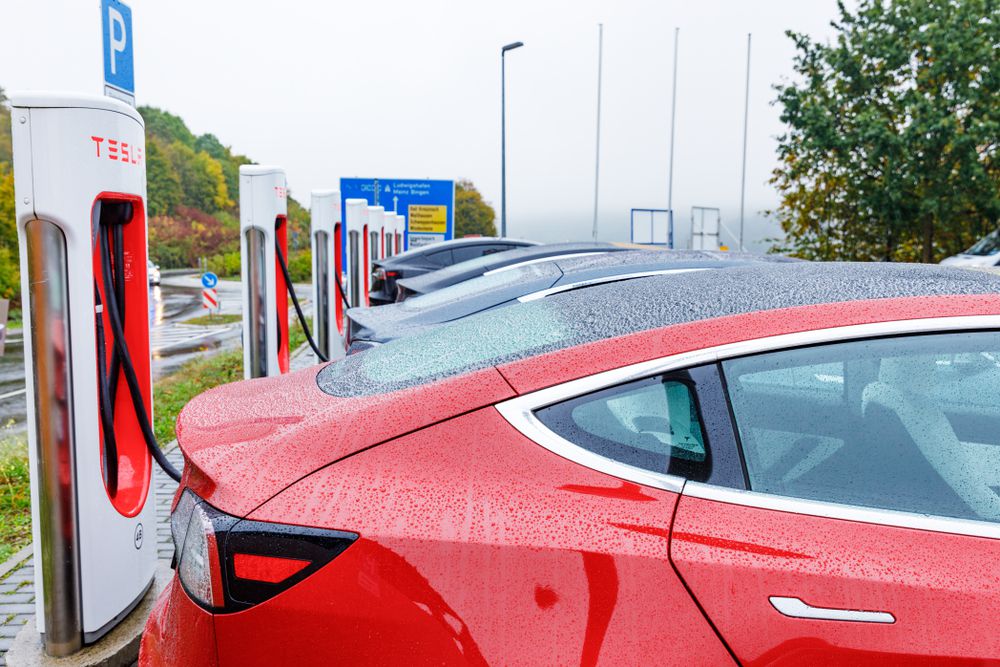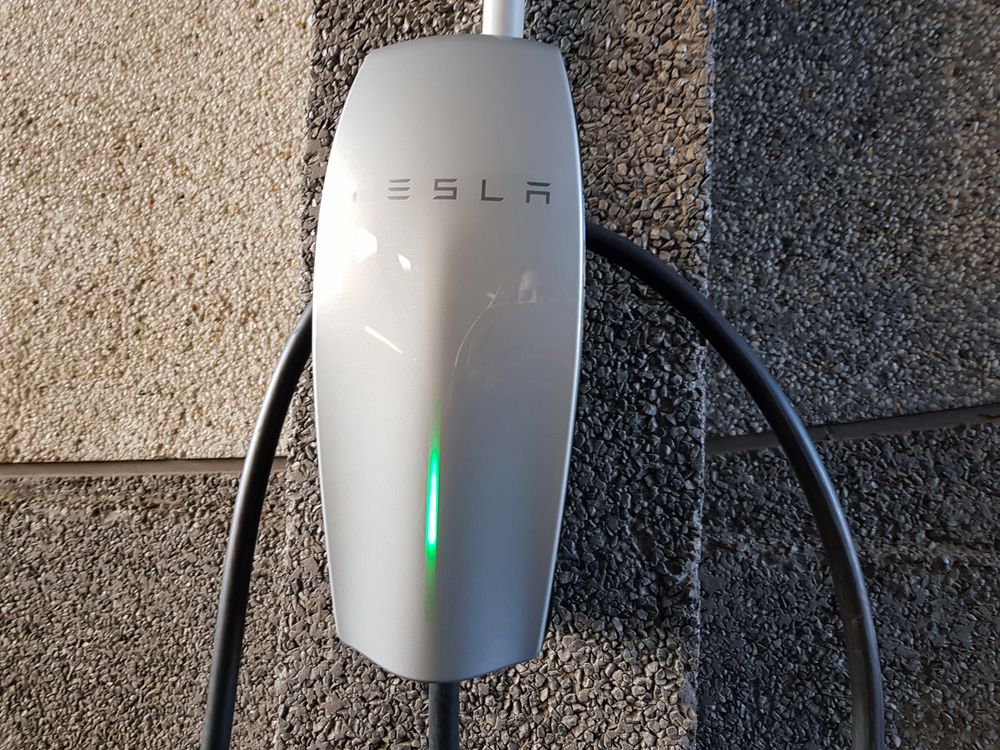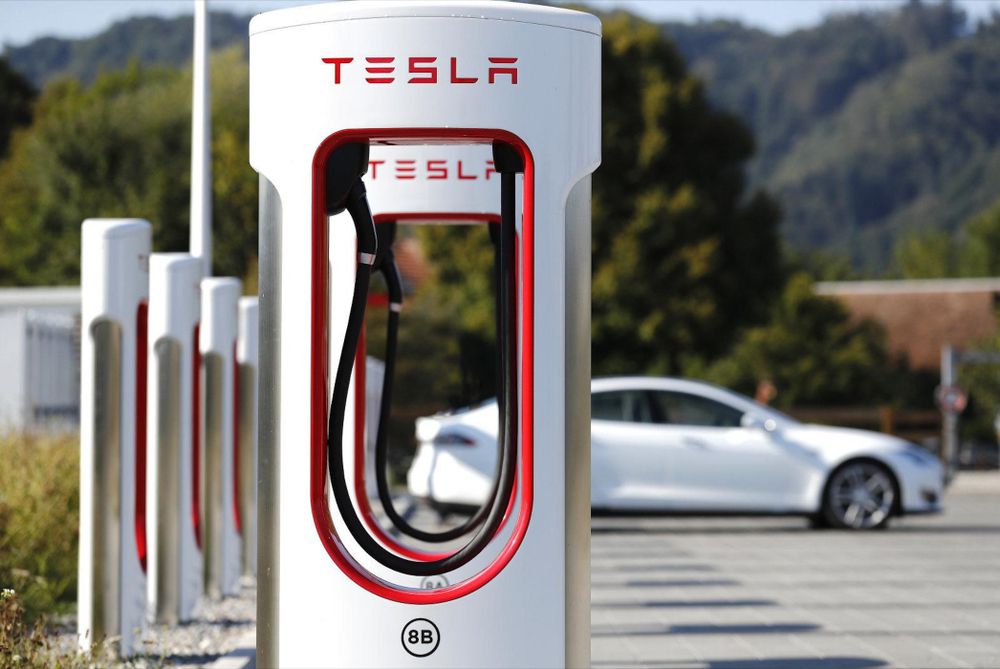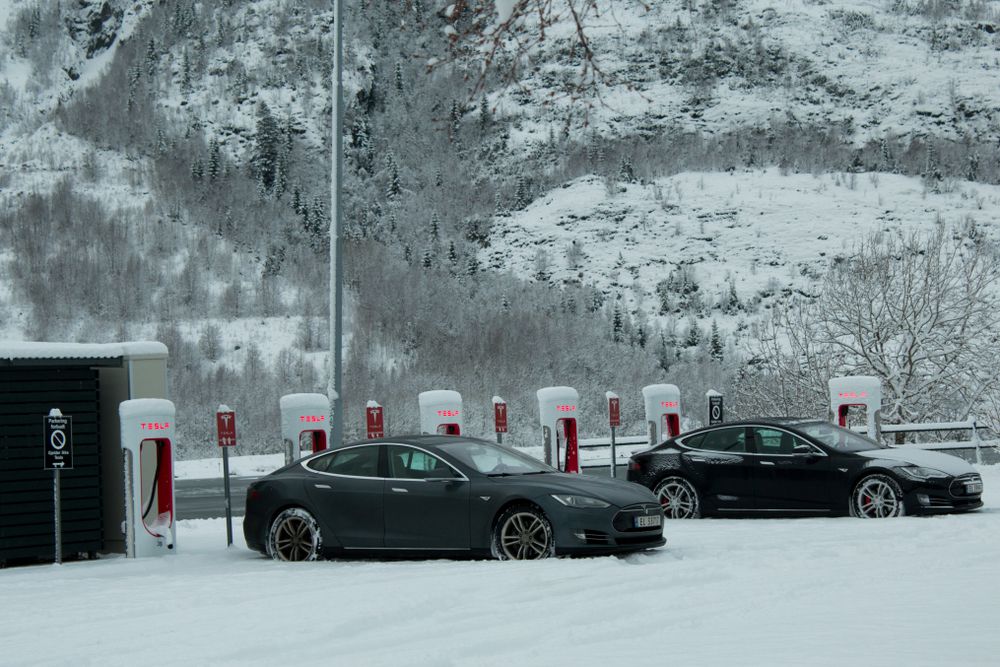Can I charge my Tesla in the rain? If water conducts electricity and electricity powers the vehicle, is it safe to charge a Tesla in the rain?
In most cases, charging your Tesla in the rain is perfectly safe and efficient. All charging ports except the Gen 2 Mobile Charging Port are waterproof, and Tesla cars have built-in safeguards to reduce the risk of electric shock or malfunction.
Teslas are a modern marvel, but the world of electric vehicles and the differences in maintenance can still be hard to navigate.
The rest of this article will discuss whether you can charge a Tesla in the rain and whether it's safe to do so.
 Charging a Tesla in the rain
Charging a Tesla in the rain
Is the Tesla Charging Port Waterproof?
Tesla charging ports are waterproof to an extent, allowing you to charge with confidence in most circumstances. The only portable charging port that isn't waterproof is the Gen 2 Mobile Charging Port.
The wires are well insulated and protected, and the Tesla has a technical system programmed to recognize potential internal issues, preventing it from powering on if it detects anything amiss.
When the car is connected to the charger, safeguards ensure that if there's any water where it shouldn't be, the car won't charge, preventing the risk of electric shock.
You'll hear an audible click as the charger connects to your Tesla, and it's only at this point when the two are connected that the voltage increases.
You only need to avoid charging your Tesla when there's an active thunderstorm.
Charging Tesla during a thunderstorm isn't ideal since a power surge can damage your vehicle.
 Tesla wall connector
Tesla wall connector
Tesla Wall Connectors
The Tesla wall connector is weatherproof, allowing it to be used anywhere with no risk of electric shock.
Safety features in the wall connector prevent it from transferring voltage if it detects moisture so if moisture gets into the tesla wall connector, it won't charge your car.
Preferably, you should keep the port in its socket or hang the connector so that it's facing downward to avoid moisture preventing you from charging your car.
The weatherproof label doesn't mean you should neglect your Tesla wall connector either.
If possible, keep it out of the rain and snow, away from inclement weather.
While the Tesla wall connector is perfectly safe for use in almost any condition, moisture or debris in the unit can prevent you from getting a good charge in the connector.
 Tesla supercharger
Tesla supercharger
Tesla Superchargers
The Tesla supercharger is a global charging network with over 30,000 locations in the U.S.
Just as with most other Tesla chargers, the supercharger is weatherproof and perfectly suited to be used in any weather besides a thunderstorm.
As Tesla's premier charging service, most supercharger stations are covered anyway.
The only active precaution you should take is brushing snow or debris off the charger before using it to ensure you get a good charge.
Tesla Gen 2 Mobile Charger
The Tesla Gen 2 Mobile Charger comes with your purchase of a Tesla, but keep in mind that it is not waterproof or weatherproof.
Keep it dry and out of the rain for the best results in ensuring your charging cable stays safe.
That said, while the Gen 2 isn't suitable for use in the rain, it doesn't pose a hazard to the user.
Water getting into the electrical components of the Gen 2 will simply cause it not to work as intended.
What The Tesla Driver's Manual Says
Can I charge my electric car in the rain? The Tesla Driver's Manual suggests that Teslas are perfectly fine to charge in inclement weather conditions.
It makes no claims about the charging ports' reliability, but other external research concludes that all charging ports beyond the Gen 2 are safe for use in the rain.
The Tesla company warns against charging your Tesla during a thunderstorm, however.
A jolt of electricity going through the charging port and into your Tesla can damage the sensitive electrical components, causing your car to malfunction.
Tesla Charger Safety Features for Charging in the Rain
Tesla has put a lot of thought into how customers will use their charging stations, and an obvious use case involves charging your car in the rain.
The chargers are well insulated to prevent any water from getting into the electrical system, and the voltage is always turned off until the charger has connected with the Tesla.
A lot of charging stations are covered to protect the chargers from getting dirty and the drivers from inclement weather.
In case you were wondering, all Tesla models are the same regarding safety features for charging in the rain.
All models are designed with sensitive electrical components, but each one is perfectly safe when it comes to charging in the rain.
Can You Charge Tesla Model 3 in the Rain?
It's perfectly safe to charge a Tesla Model 3 in the rain.
Can You Charge a Tesla in the Snow?
As long as the outlet where the charger meets the wall is not soaked, it's safe to charge a Tesla in the snow.
Your most significant risk factor for mobile or at-home charging stations is not the charging port where the car meets the connector; it's where the charger is plugged in at its source.
 Tesla charging in the snow
Tesla charging in the snow
While the charger may be perfectly safe, an outlet risks short-circuiting when exposed to different weather conditions.
As such, always ensure your outlet is safe and away from water or dust.
Conclusion
Teslas are designed with your safety in mind. However, dealing with electrical components can be dangerous, so Tesla has implemented the latest safety features in their cars and charging stations.
The cars are designed to register high levels of electricity and shut down to prevent damage to internal components.
The chargers are also insulated and protected with extreme caution to avoid the risk of electric shock.
The only charger you'll have to keep out of the rain is the Gen 2, which can still be set up in a covered area.
Frequently Asked Questions
Does Cold Weather Affect EV Charging?
Temperature negatively affects charging times in Tesla vehicles, potentially reducing range and increasing charge times threefold.
Cold weather causes ions to flow through the battery more slowly, increasing the time it takes for the car to charge fully.
Additionally, due to how charging works, the battery receives fewer ions overall, reducing the total charge you get (aka the range of your Tesla).
Is It Safe to Charge an Electric Car in a Garage?
Unlike gas cars, EVs can be turned on in the garage and are safe. Think of your Tesla as a big appliance.
It gets warmer as it heats up but doesn't emit any toxic gasses that could build up in your garage.
You're perfectly free to plug and go when it comes to charging in your garage if you follow basic electric safety guidelines for outlets and the type of charger you have at home.
Always ensure that your outlet is protected and avoid charging your Tesla during a thunderstorm to prevent the risk of electric shock.
Why Do Tesla Owners Tap the Charger?
Tapping the charger or the taillight of a Tesla is a common practice among Tesla owners that may have several purposes.
At this point, it's become something of a legacy for Tesla owners to do just out of habit, but if you own a Tesla and find yourself doing this, it might be serving a purpose.
At least, in theory, tapping the charger or the taillight can help remove the buildup of static electricity on the head of the charger, allowing electricity to flow more freely and improving charging time.
It's akin to tapping the bottom of a ketchup bottle to help loosen up any coagulated near the lid.
Some people do it to avoid being shocked by the difference in the car's and charger's static levels, although static shock is improbable.